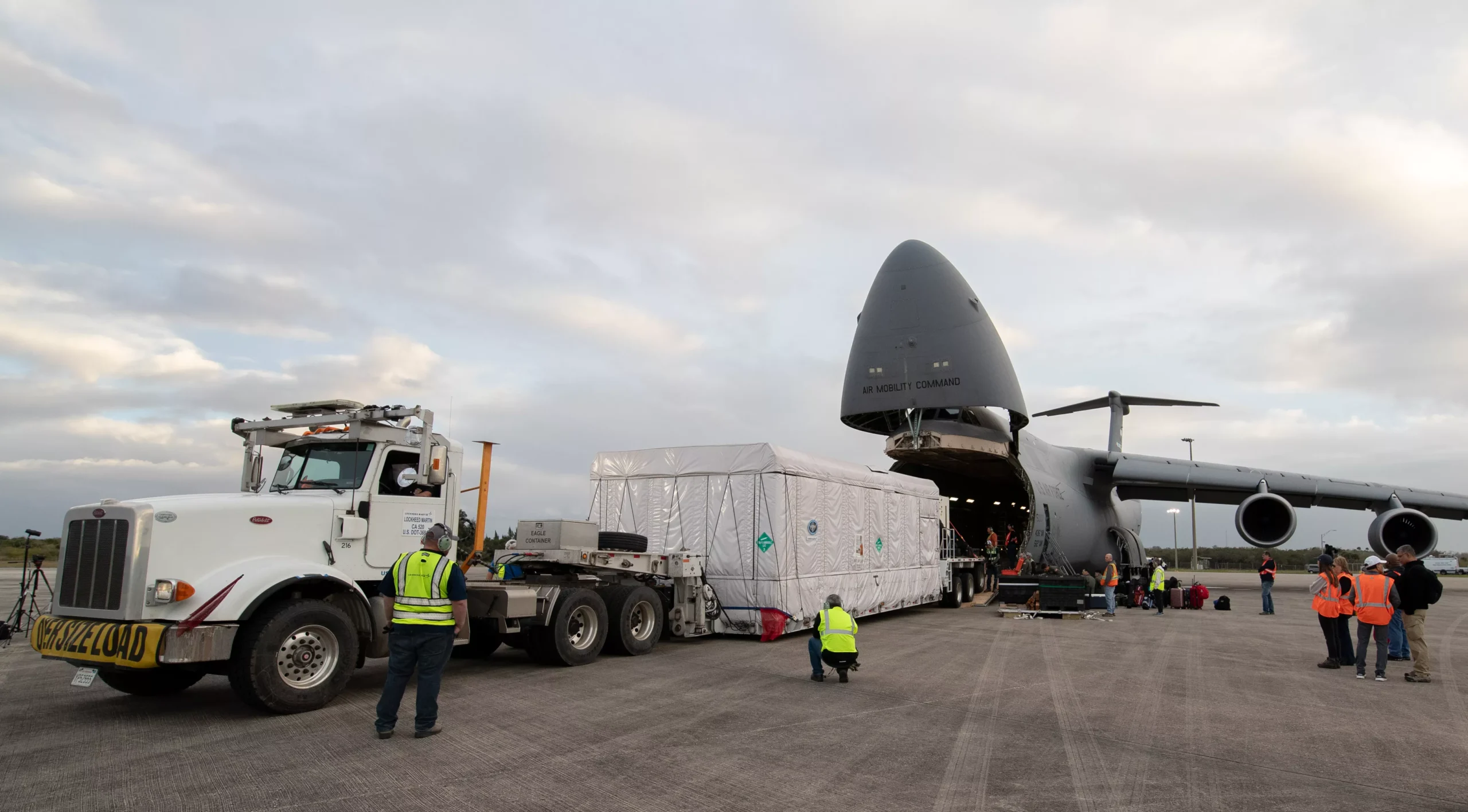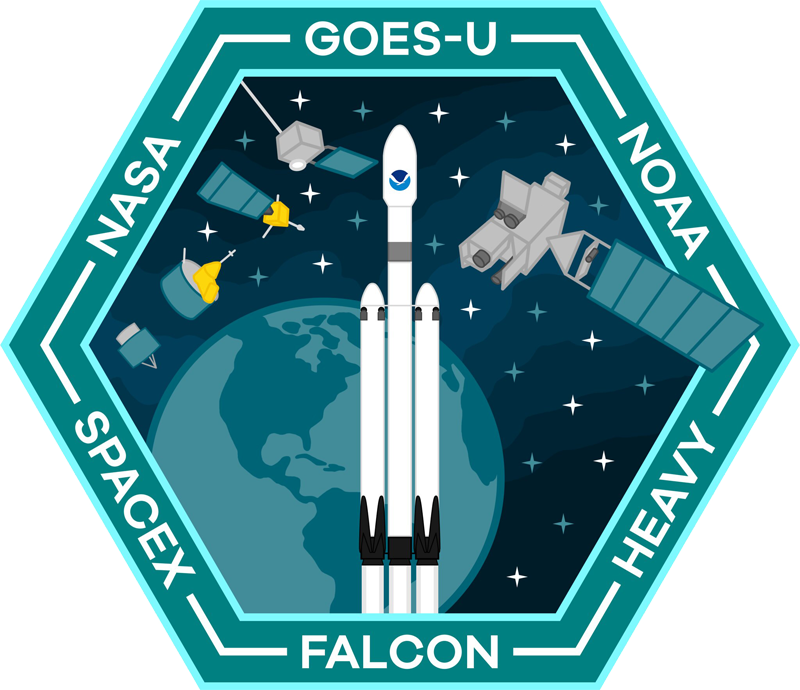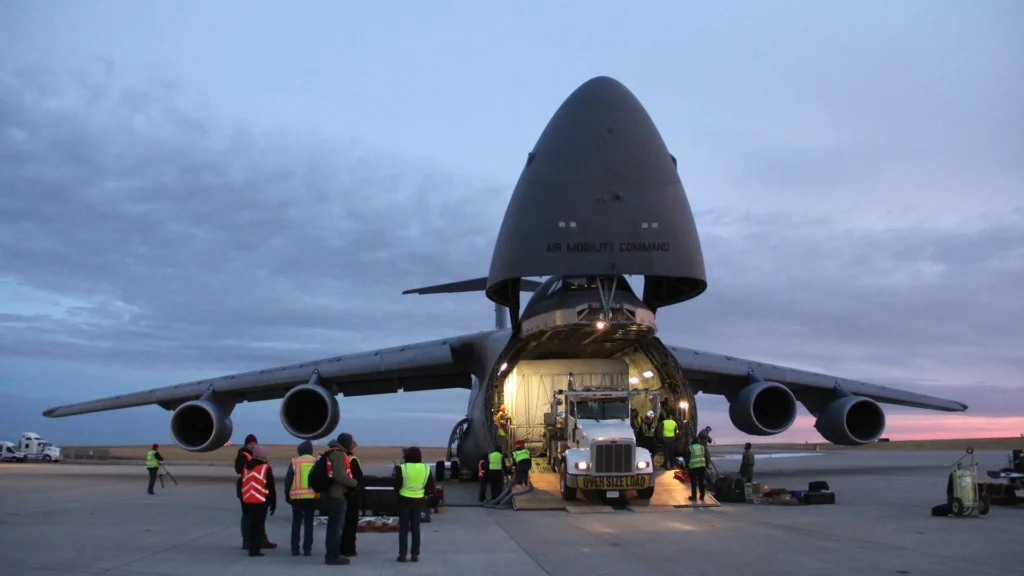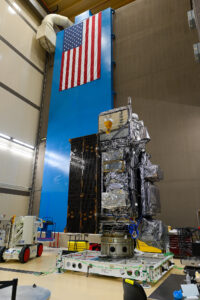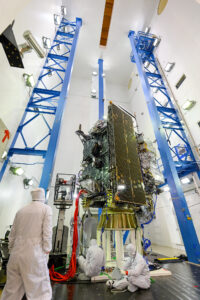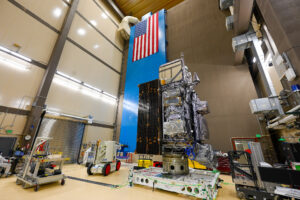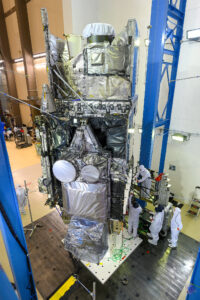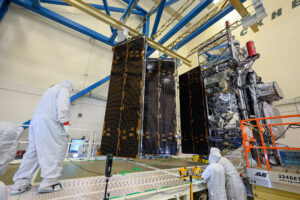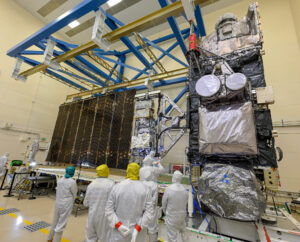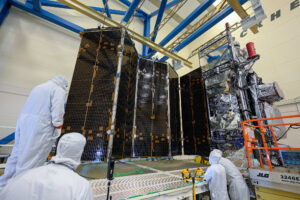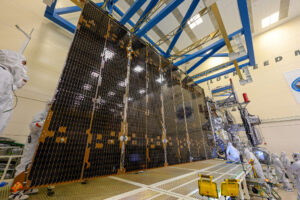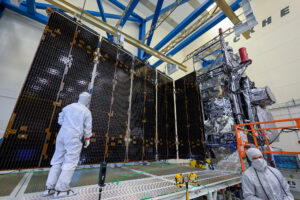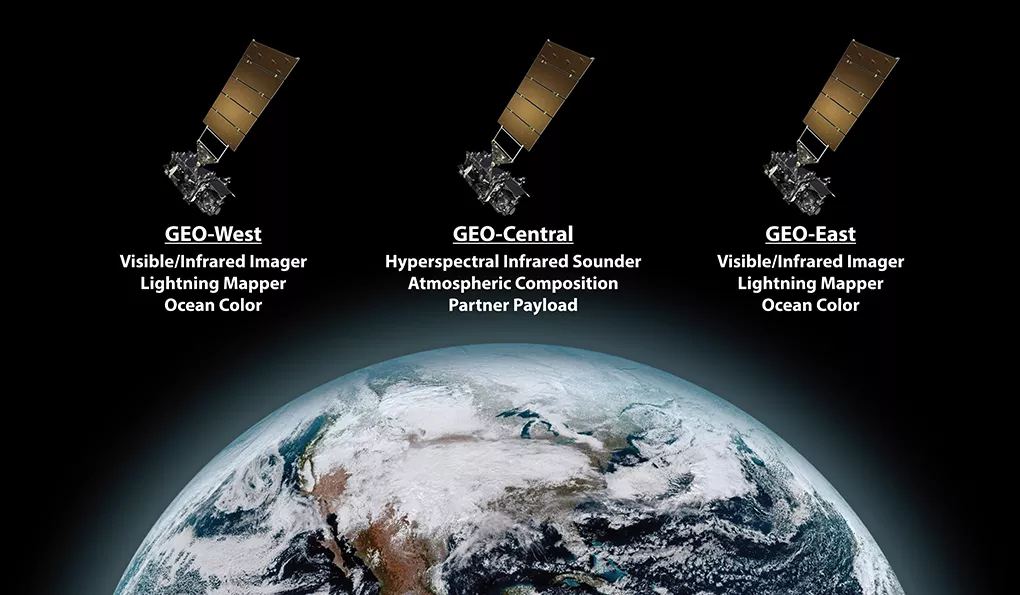GOES-U Launch Rescheduled to Lift Off After Minor Delay
Updated June 10th. 2024
The launch of GOES-U, the final satellite in NOAA’s GOES-R Series, has been rescheduled for Tuesday, June 25th. This shift allows extra time for engineers to complete repairs and tests on the Falcon Heavy core booster after a minor liquid oxygen leak was discovered in February.
After eighteen years in the making and billions of dollars spent, a fourth and final weather satellite from the National Oceanic and Atmospheric Administrations, meant to protect the United States nears its final stage before launch.
Unboxing a 6,000 pound Satellite the size of a small bus.
NOAA’s next-generation weather satellite, GOES-U, has landed at NASA’s Kennedy Space Center and is officially on the path to liftoff!
Following touchdown at NASA’s Kennedy Space Center Launch and Landing Facility on January 23, 2024 (GMT-05:00), the Geostationary Operational Environmental Satellite-U (GOES-U) spacecraft underwent initial ground processing at Astrotech Space Operations facility in Titusville, Florida.
On January 24, 2024, the GOES-U payload was meticulously extracted from its specialized transport container. Following a thorough visual inspection, the spacecraft was strategically rotated and mounted onto a dedicated test stand to commence pre-launch verification and functional testing procedures.
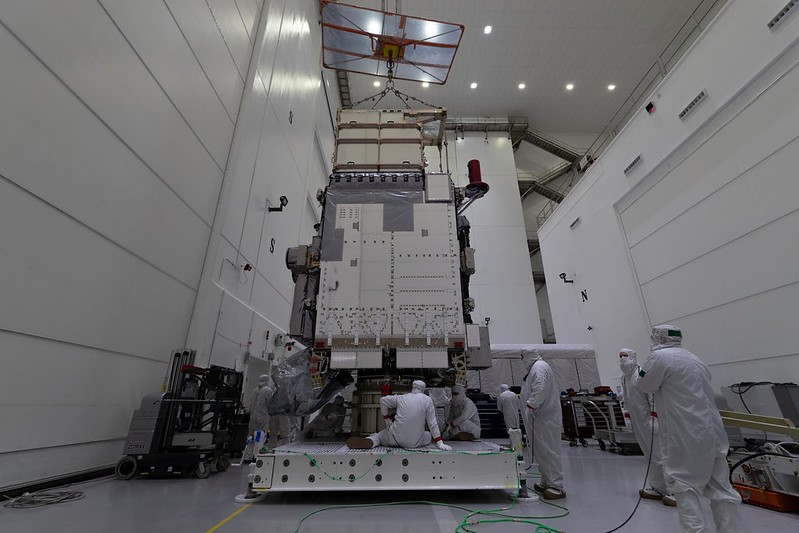
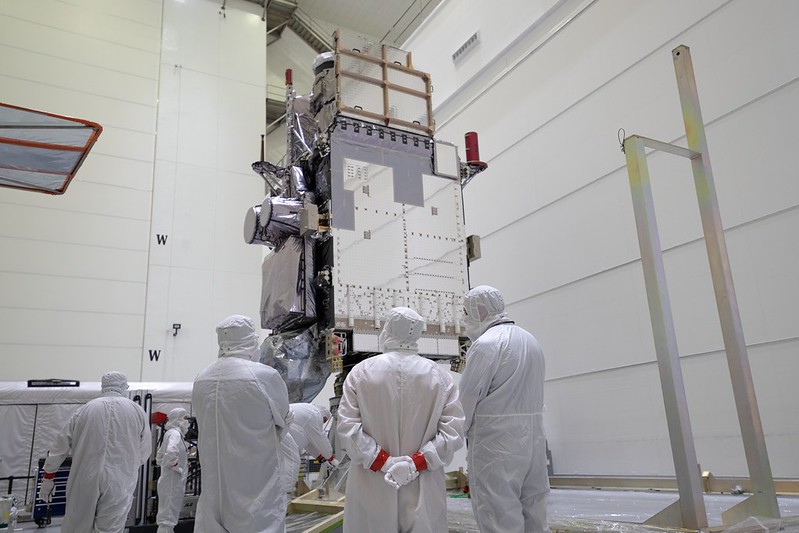
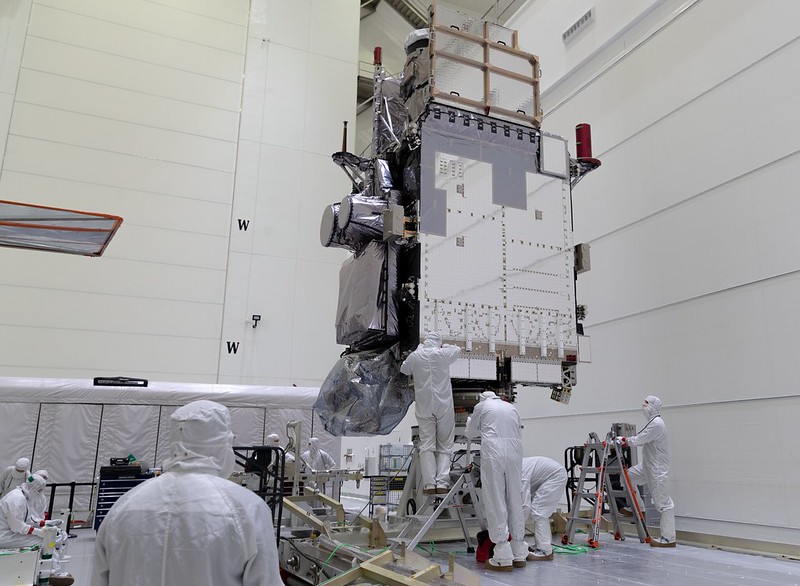
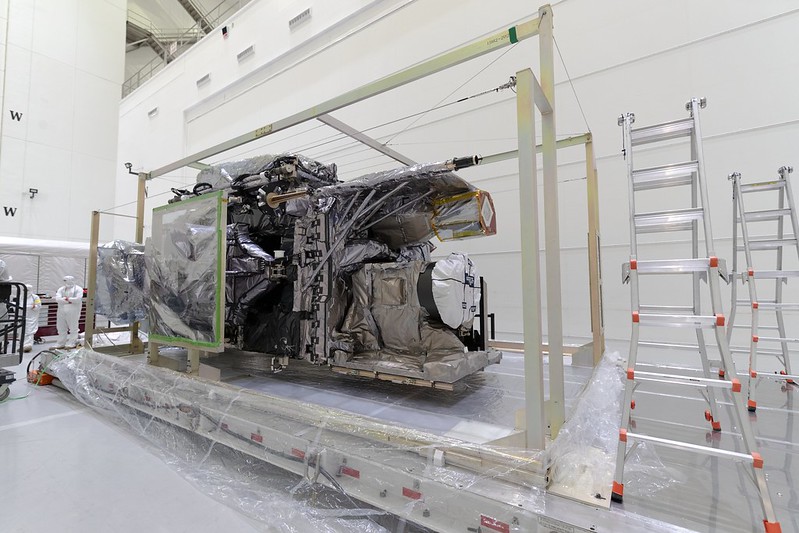
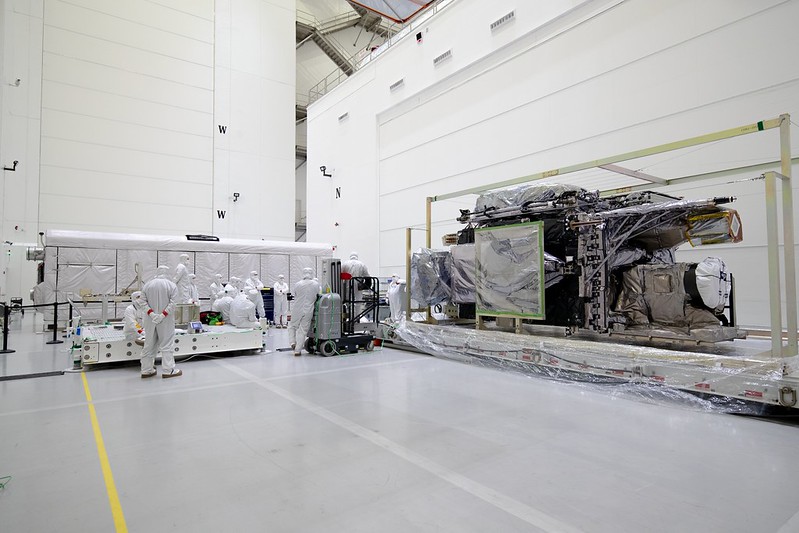
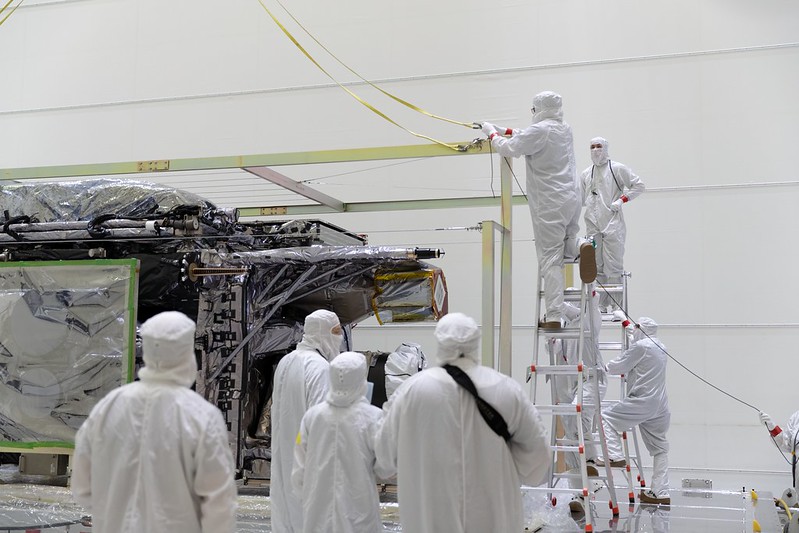
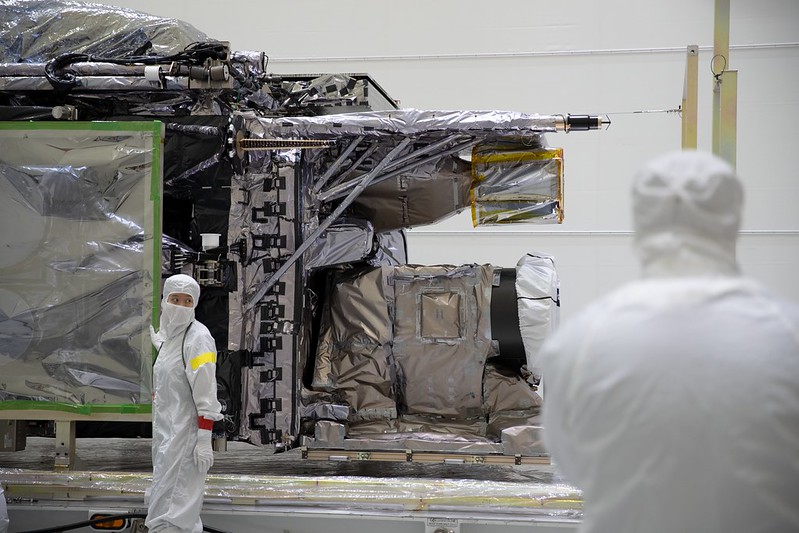
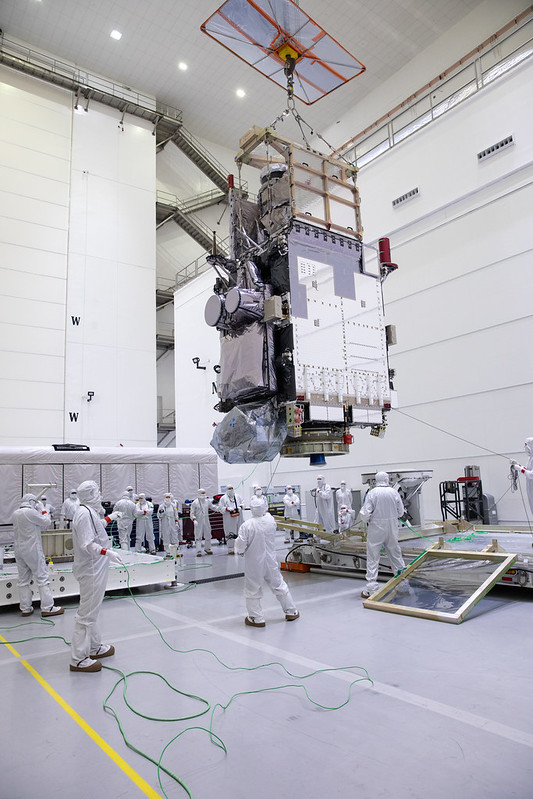

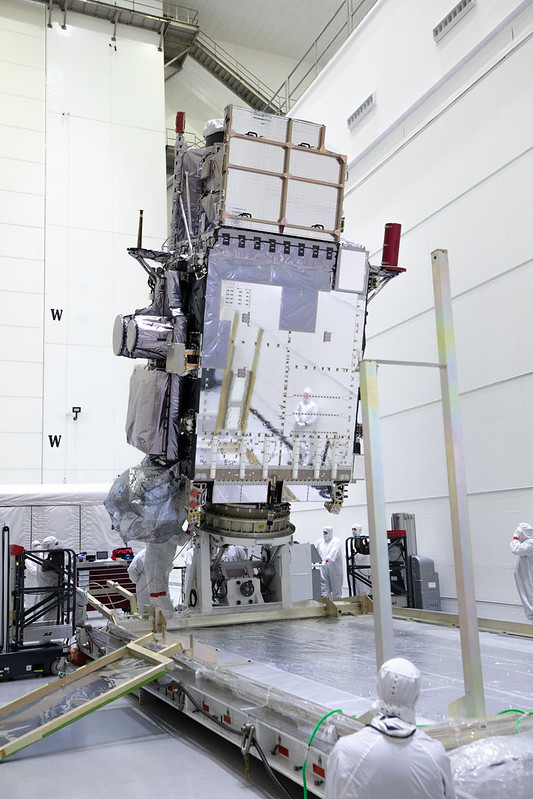
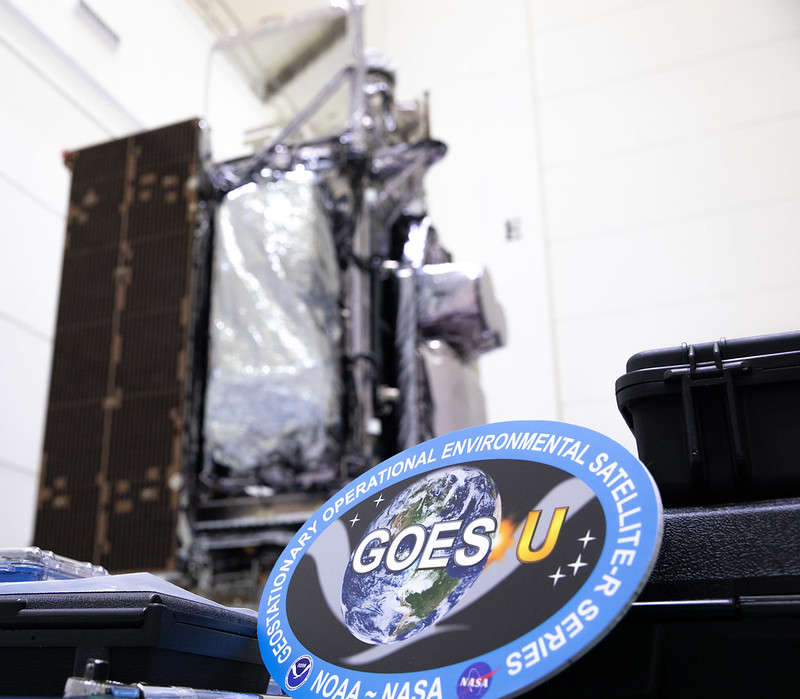
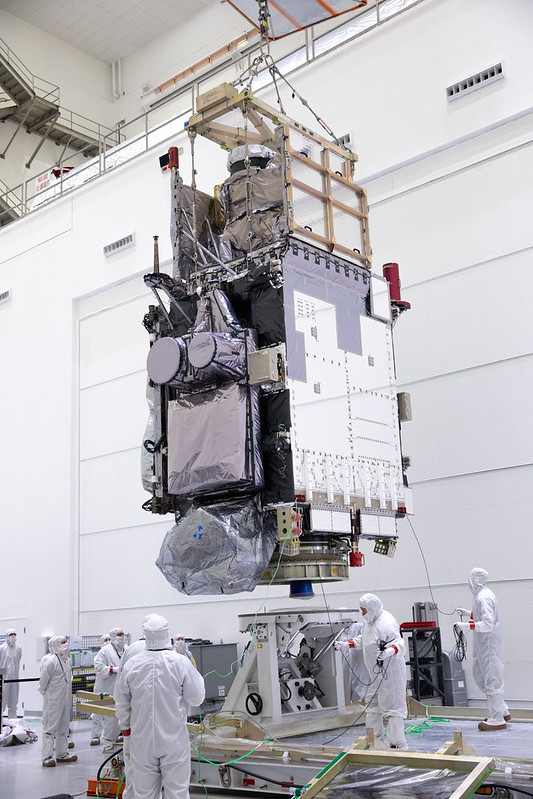
Scheduled for launch no earlier than April 30th, 2024, GOES-U will be the final satellite in the GOES-R series,
TOUCHDOWN IN FLORIDA: GOES-U ARRIVES FOR LAUNCH!
GOES-U’s journey began in Colorado, where it was carefully packed and secured in a high-tech shipping container. This mobile clean room protected the sensitive instruments throughout the trip. Then, it hitched a ride on a massive C-5M Super Galaxy cargo transport.
Landing on Historic Ground:
After its airborne adventure, GOES-U touched down at the iconic NASA Launch and Landing Facility at Kennedy Space Center. This very runway witnessed the awe-inspiring landings of 78 space shuttle missions between 1984 and 2011.
The Next Chapter:
GOES-U’s arrival in Florida marks the start of its final preparations for launch. The satellite will undergo rigorous testing and fueling before taking its position in geostationary orbit, approximately 22,300 miles above Earth. From there, it will keep a watchful eye on our planet, providing invaluable data on weather patterns, severe storms, and environmental changes.
Stay tuned for updates on GOES-U’s launch and its important role in safeguarding our planet!
And, yes they ship the truck and trailer too!
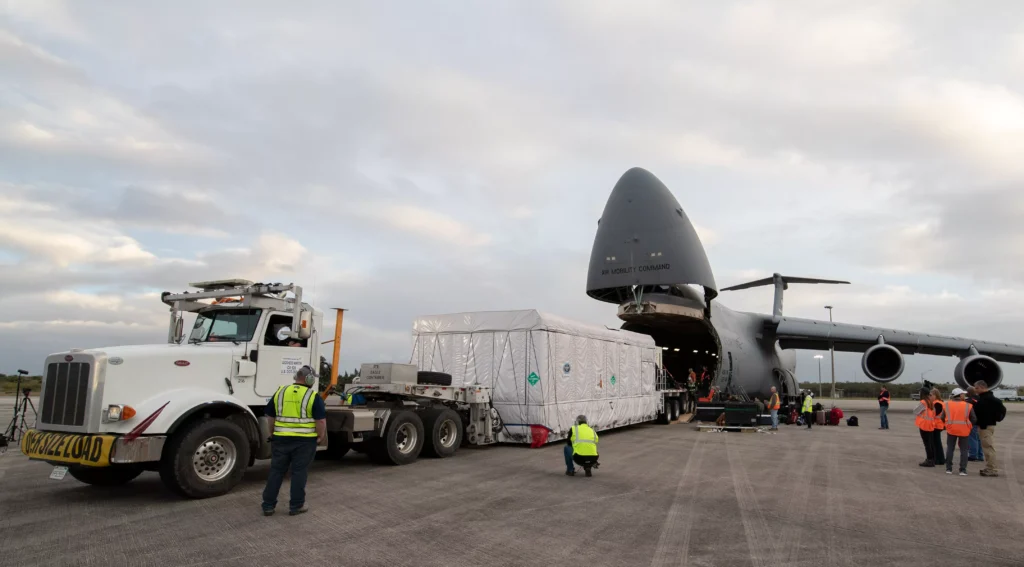

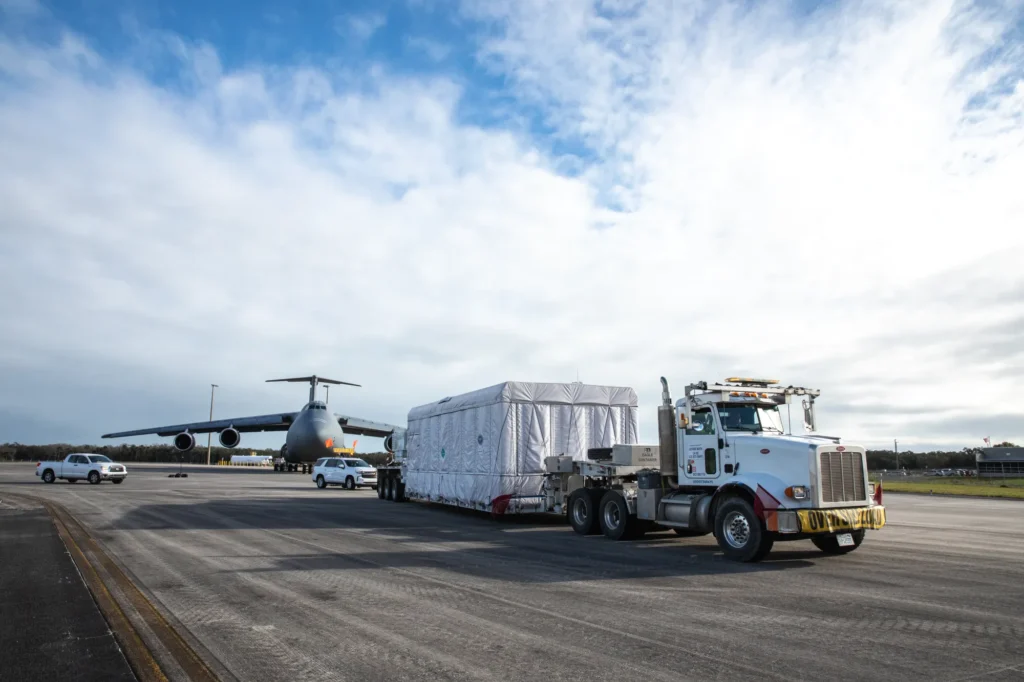
After arriving at the Kennedy Space Center in Florida on Jan. 23, 2024, technicians slowly bring GOES-U off the aircraft for a short drive to Astrotech Space Operations in Titusville Florida.
GOES U Launch Patch– In order to commemorate the long history of the Geostationary Operational Environmental Satellite (GOES) program, all of the previous generations can be seen to the left of Falcon Heavy:• GOES A-C• GOES D-H• GOES I-M• GOES N-P, Meanwhile the current generation GOES-R/GOES-U satellite can be seen to the right of Falcon Heavy.
What’s Next after GOES-R?
NOAA’s next flagship weather program – called the Geostationary Extended Observations (GeoXO) satellite system – will expand these already robust weather observation capabilities. Its technology will be designed to address further challenges faced by humankind, like increased severe weather, emerging environmental issues and rising ocean temperatures driven by a rapidly changing climate.
For the first time, GOES-U will be launched aboard a SPACE X Falcon Heavy. The total cost for NASA to launch GOES-U is approximately $152.5 million. Launch scheduled for April 2024 from KSC 39A. Each of the GOES Satellites are designed for 5 years of orbital storage and 10+ years of operational use.
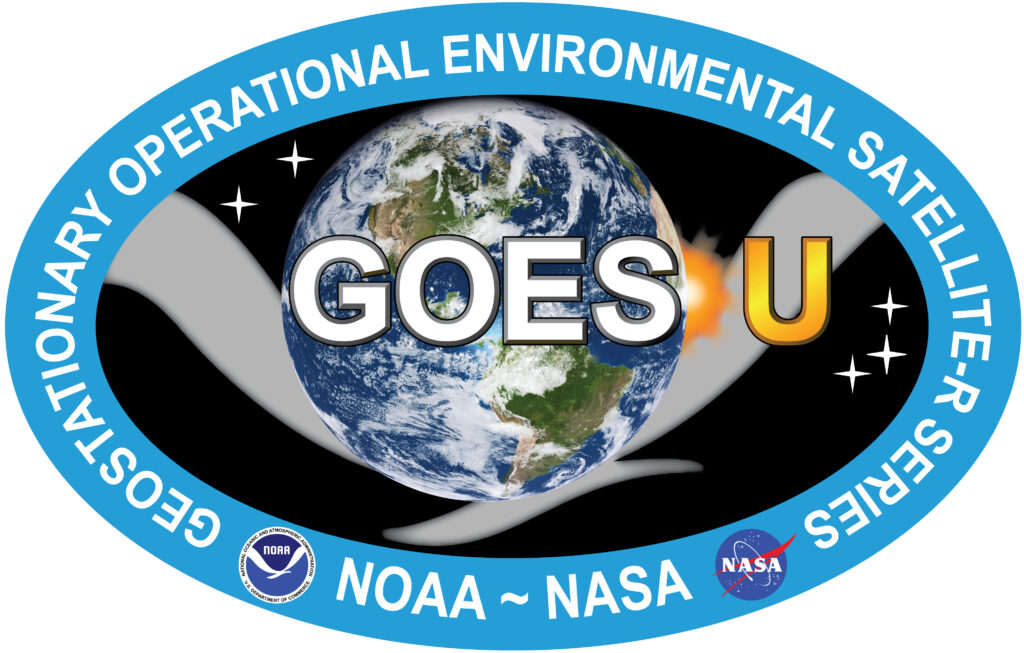
UPDATE 01/22/2024 NOAA’s GOES-U is on its way from Colorado to Florida! Anticipated launch, April 30th, 2024
The fourth GOES satellite is finally ready for its trip to space! On Monday, Lockheed Martin engineers helped load the spacecraft onto a C5 Galaxy transport jet at Buckley Space Force Base. It’s bound for Kennedy Space Center for a hopeful launch date on April 30.
Once it reaches Florida on Tuesday, it will start another series of testing which normally takes about three months to complete.
The satellite, which is about the size of a school bus, was transported from the Lockheed Martin facility in Waterton Canyon by a police escort before dawn. It’s sealed in a giant white box which is actually a clean room on wheels.
Engineers want to make sure that the sensitive instruments on the satellite, like its sophisticated camera called the Advanced Baseline Imager, don’t end up with any particles obstructing their ability to function. Even the smallest hair or piece of dust could corrupt the data that GOES sends back, and it’s a little hard to wipe a lens clean when it’s 22,000 miles away.
The craft will then undergo pre-launch processing “to confirm it is working properly and mechanical configurations to prepare it for launch,”
The satellite then requires fueling and oxidizing, which means the team at NASA will have to don Self-Contained Atmospheric Protective Ensemble (SCAPE) suits to protect them from any toxicity, NOAA said. Once all is done and there are no leaks to be found, the team will measure the craft’s center of gravity.
The GOES-U satellite will then be added to a Falcon Heavy rocket from SpaceX, where it will roll out onto the launch pad ahead of its expected launch date, NOAA said.
The life expectancy of these GOES satellites is about 10 years, so they are expected to carry weather forecasters into the 2030s. But NOAA is already working on their replacements which will be called the Geostationary Extended Observation satellites (GeoXO).
The GOES satellites are essential for weather forecasting. They provide images of the Earth’s atmosphere and surface every 15 minutes, which helps meteorologists track storms, monitor climate change, and issue warnings for severe weather. The new GOES-4 satellite will have even more advanced instruments than its predecessors, which will allow for even more accurate weather forecasting.
UPDATE 11/29/2023 NOAA’s GOES-U has completed all environmental testing. GOES-U is on track for an April 2024 launch from Cape Canaveral Space Force Station in Florida onboard a Falcon Heavy launch vehicle. The satellite will be renamed GOES-19 once it reaches geostationary orbit, approximately two weeks after launch. GOES-19 will then undergo an on-orbit checkout of its instruments and systems, followed by validation of the satellite’s data products. Most recently, the team conducted testing to verify commands with the new Compact Coronagraph-1 (CCOR-1) instrument. CCOR-1 is a new space weather instrument that will fly on GOES-U and image the solar corona (the outer layer of the sun’s atmosphere) to detect and characterize coronal mass ejections (CMEs).
UPDATE 07/20/203 GOES-U, the fourth and final satellite in NOAA’s GOES-R Series, recently completed a successful test deployment of its solar array to ensure it will function properly in space.
This critical test verified that the satellite’s large, five-panel solar array — which is folded up when the satellite is launched — will properly deploy when GOES-U reaches geostationary orbit. During this test, engineers unfurled the five panels on rails that simulated the zero-gravity environment of space. Each solar panel is approximately 13 feet tall by 4.5 feet wide and weighs approximately 45 pounds.
Once GOES-U reaches orbit, the deployed solar panels will form a single solar array wing that will rotate once per day to continuously point its photovoltaic (solar) cells toward the sun. The photovoltaic cells will convert energy from the sun into electricity to power the entire satellite, including the instruments, computers, data processors, sensors, and telecommunications equipment. The solar array will generate more than 5,000 watts of power for the satellite. This is equivalent to the power needed to run a central air conditioning system in your home.
The solar array was developed and built by Lockheed Martin at its Sunnyvale, California, facility and tested at Lockheed Martin’s facility in Littleton, Colorado, where GOES-U was assembled. GOES-U is scheduled to launch in April 2024. “Most of the planned work will be done by mid-October of this year,” said Iowa native Matt Kettering, the GOES ATLO Mechanical Manager at Lockheed.
FALCON HEAVY LAUNCH VEHICLE SPECIFICATION
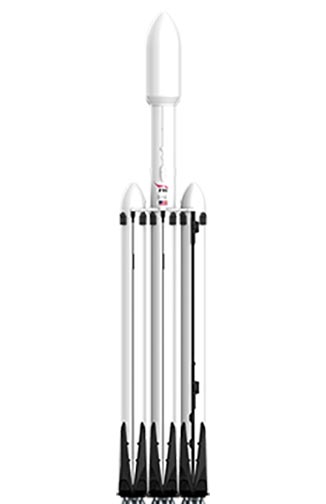
Falcon Heavy is composed of three reusable Falcon 9 nine-engine cores whose 27 Merlin engines together generate more than 5 million pounds of thrust at liftoff, equal to approximately eighteen 747 aircraft. As one of the world’s most powerful operational rockets, Falcon Heavy can lift nearly 64 metric tons (141,000 lbs) to orbit.
- Height: 229.6 feet (70 meters)
- Mass: 3,125,735 pounds (1,420,788 kilograms)
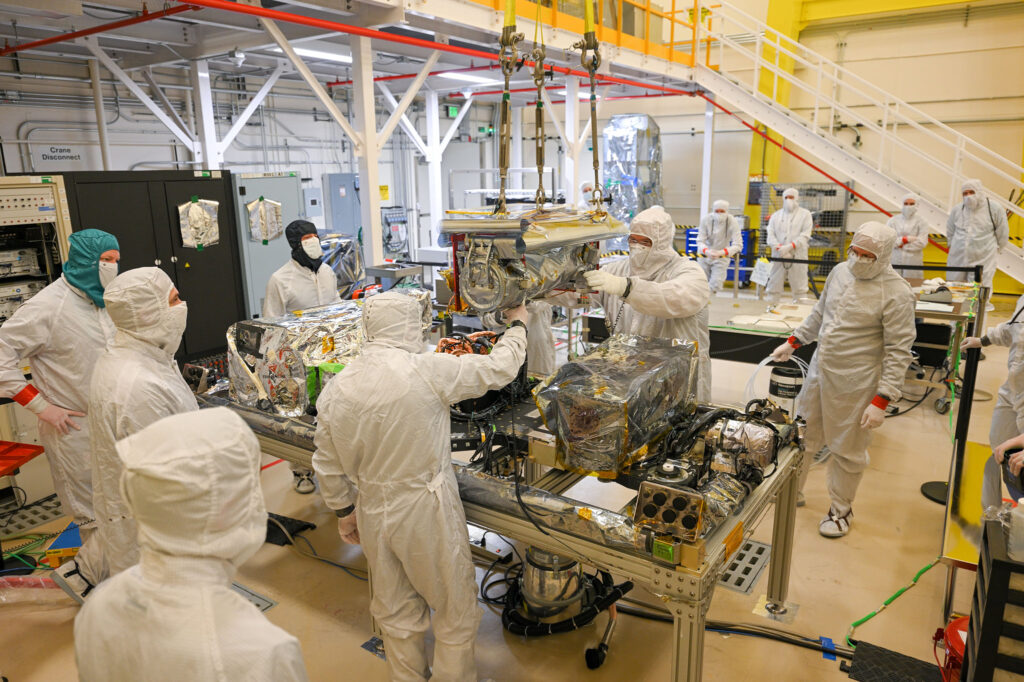
The fourth satellite in NOAA’s GOES-R Series, GOES-U, recently had a new instrument installed. Called a Compact Coronagraph, this is a copy of the Naval Research Laboratory‘s Compact CORonagraph (CCOR) instrument which, along with the CCOR planned for Space Weather Follow On-Lagrange 1 (SWFO-L1), which will allow continuous monitoring of solar wind after the retirement of the NASA-ESA SOHO satellite in 2025. This will be the first time it has been installed on any GOES spacecraft.
“For (GOES)-U, on our sun pointing platform, the GOES team had to go redesign the whole platform and change where you’re putting boxes, change where you’re putting harnesses,” said Iowa native Matt Kettering, the GOES ATLO Mechanical Manager at Lockheed. “We had a mock-up that we did and we worked through spacing, we worked on testing, all well in advance of actually getting the instrument here and putting it on.”
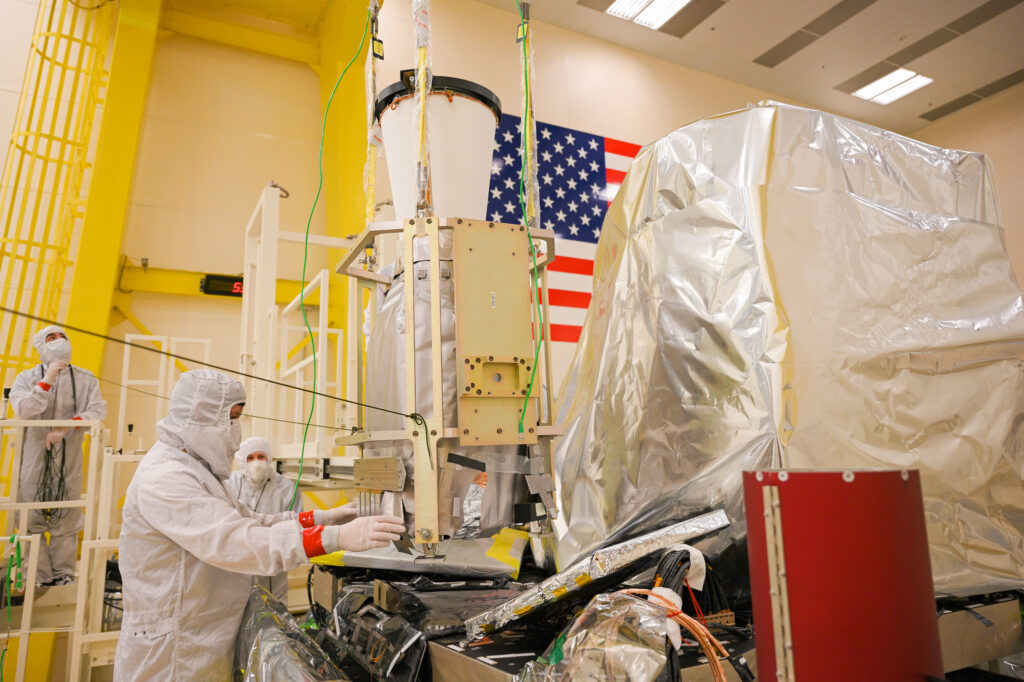
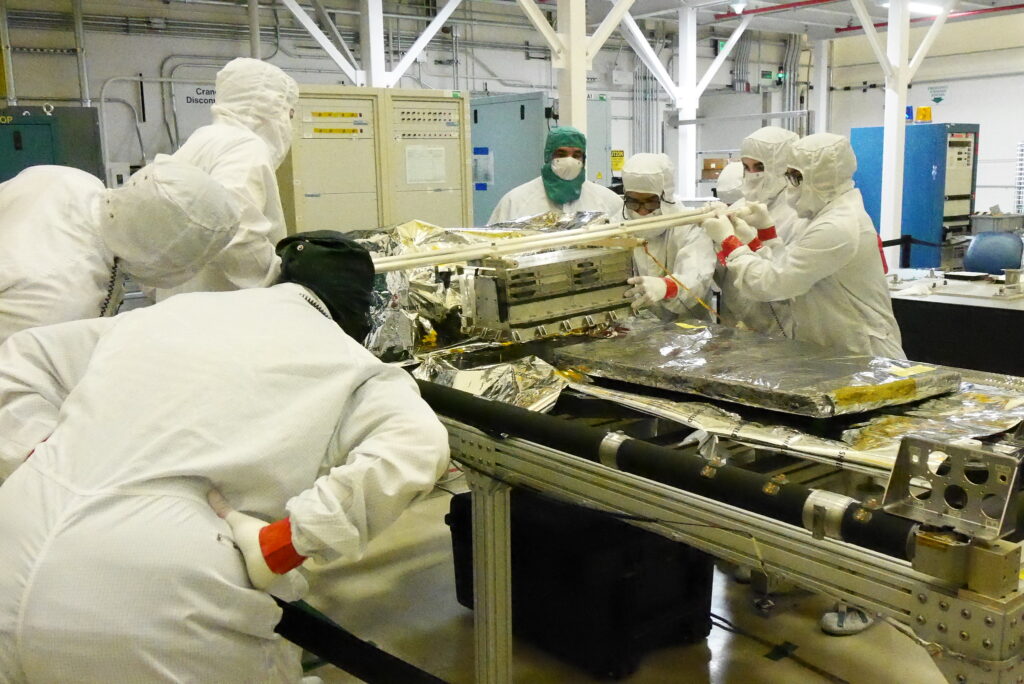
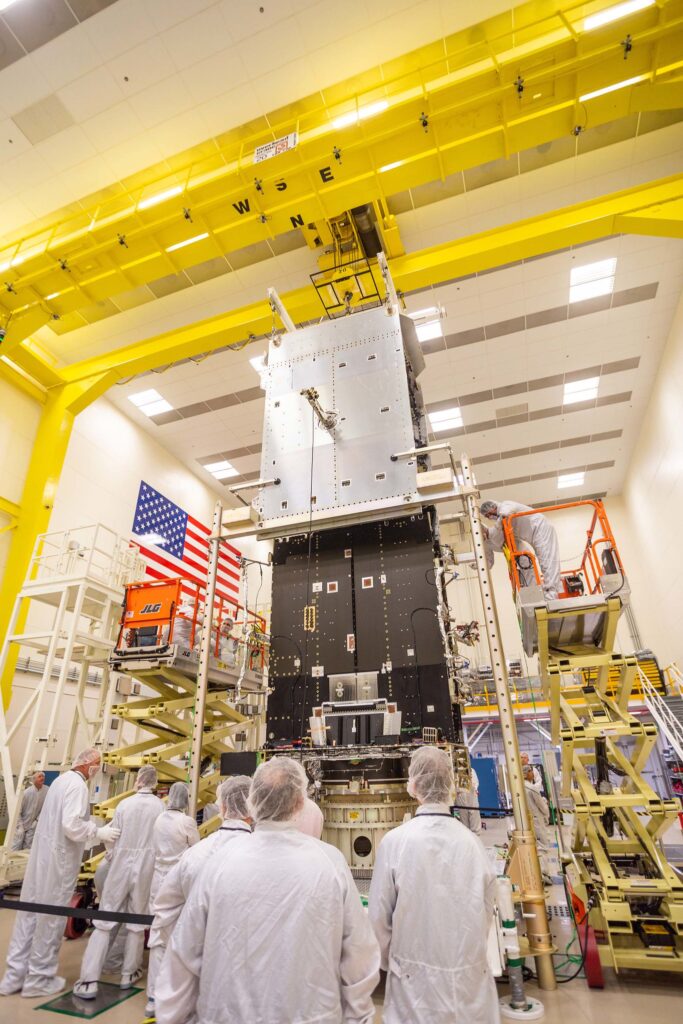
GOES Satellites
GOES-1 (1975-1985)
GOES-2 (1977-1993)
GOES-3 (1978-1993)
GOES-4 (1980-1988)
GOES-5 (1981-1990)
GOES-6 (1983-1989)
GOES-7 (1987-1996)
GOES-8 (1994-2004)
GOES-9 (1995-2007)
GOES-10 (1997-2009)
GOES-11 (2000-2011)
GOES-12 (2001-2013)
GOES-13 (2006-Standby)
GOES-14 (2009-Standby)
GOES-15 (2010-Current) EWS-G1
GOES-16 (2016-Current)
GOES-17 (2018-Current) EWS-G2
GOES-T (2022-Current)
GOES-U (Planned April 2024)

